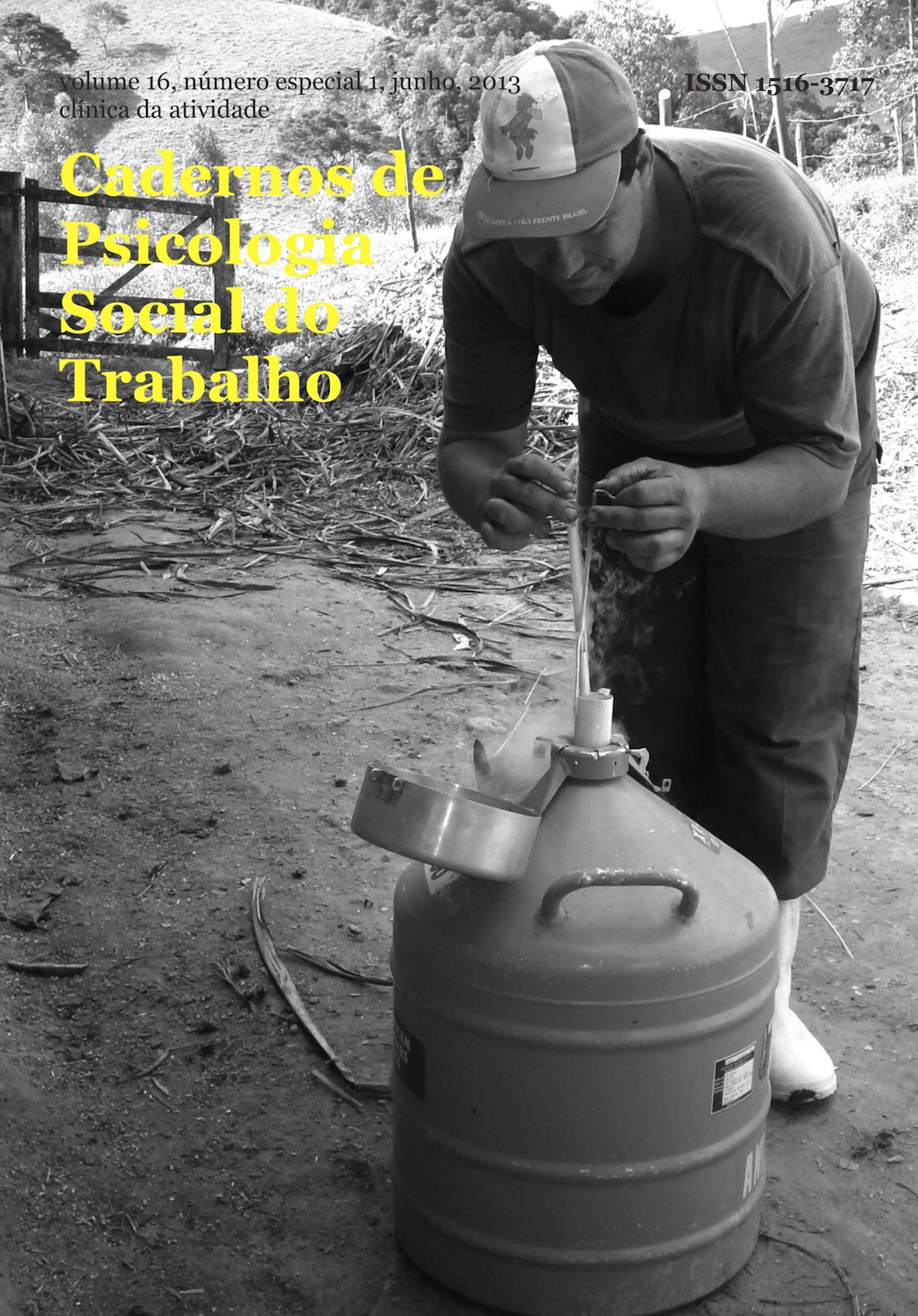Clínica do trabalho e experiência de formação com trabalhadoras de escolas públicas no Brasil
DOI:
https://doi.org/10.11606/issn.1981-0490.v16ispe1p69-89Palavras-chave:
Clínica do trabalho, Perspectiva ergológica, Comunidade ampliada de pesquisa, Dispositivo dialógico, Desenvolvimento.Resumo
O estudo discute o modo como o Programa de Formação em Saúde, Gênero e Trabalho nas Escolas concebe e recorre ao dispositivo denominado Comunidade Ampliada de Pesquisa (CAP), na tentativa de colaborar para a sinergia entre os polos que configuram a perspectiva ergológica (DD3P), que tem por meta o compreender transformar em parceria – pesquisadores profissionais e pesquisadores práticos ↔ (protagonistas do trabalho em análise, militantes sindicais etc.) – por meio de “encontros sobre o trabalho” que combinam formação, pesquisa e intervenção. O dispositivo CAP visa colocar o trabalho em situação clínica a partir de um método de alternância – curso/exercícios de análise realizados pelos trabalhadores /encontros sobre o trabalho. O enquadre clínico instaura e desenvolve um espaço dialógico particular de confronto de saberes e experiências, fazendo circular na CAP, de forma fecunda, uma comunidade dialógica voltada a analisar o trabalho individual e coletivo. A experiência desenvolvida nas escolas é apresentada em sua potência de clínica do trabalho a partir de algumas sequências de diálogos pelo que elas constituem de dinâmicas interlocutivas particulares e pelo que revelam sobre os esforços dos sujeitos para criar instrumentos de ação sobre si mesmos e os outros.
Downloads
Downloads
Publicado
Edição
Seção
Licença
Autores que publicam nesta revista concordam com os seguintes termos: autores mantém os direitos autorais e concedem à revista o direito de primeira publicação, com o trabalho licenciado sob uma Licença Creative Commons Attribution, permitindo o compartilhamento do trabalho com reconhecimento da autoria do trabalho e da publicação inicial nesta revista. Autores têm autorização para assumir contratos adicionais separadamente, para distribuição não-exclusiva da versão do trabalho publicado nesta revista (ex.: publicar em repositório institucional ou como capítulo de livro), com reconhecimento de autoria e da publicação inicial nesta revista. Autores têm permissão e são estimulados a publicar e distribuir seu trabalho online (ex.: em repositórios institucionais ou na sua página pessoal) a qualquer ponto antes ou durante o processo editorial, já que isso pode gerar alterações produtivas, bem como aumentar o impacto e a citação do trabalho publicado.







